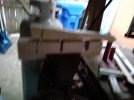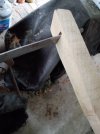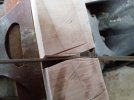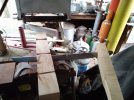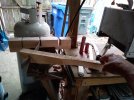Bühlmann
North Lake Forge
- Joined
- Jan 6, 2022
- Messages
- 475
I have some 24" x 1.5" x 0.25" sticks of 5160 that came to me with a slight bow in them along their length. I cut a 9" section off for a full tang pattern, laid it out and roughed out the profile. The bow in the stock is still significant. What's the best/fastest/easiest way to eliminate this bow? I know I can grind it, pretty sure I can heat & bend it, but I'm kinda concerned about it showing back up as a warp after heat treat. Is one method better than the other? Is there a preferred "stress relief" temperature to shoot for if I heat it and clamp it? Thanks!

